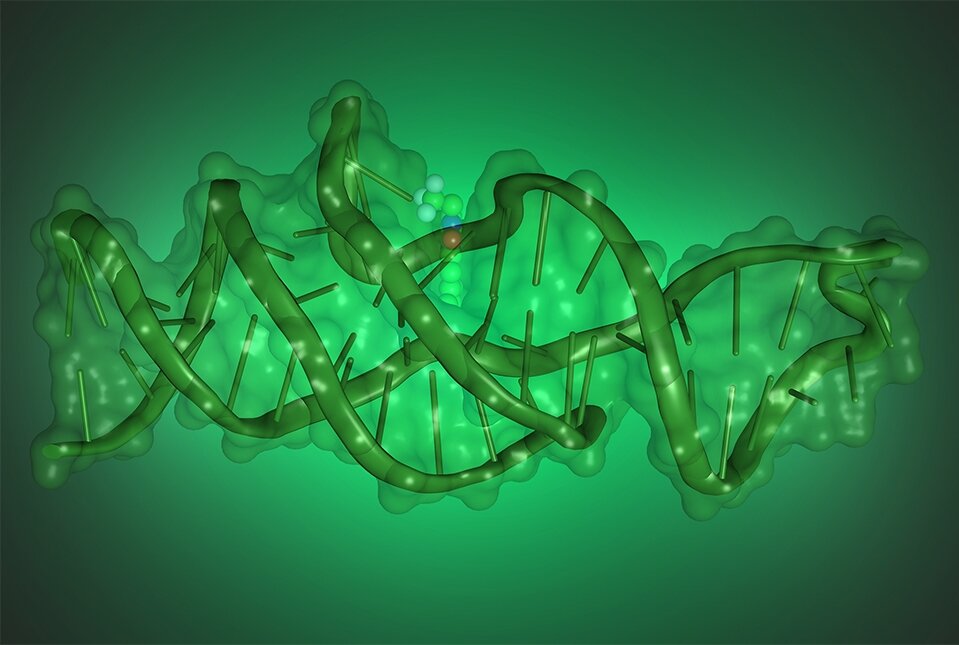Researchers at Weill Cornell Medicine and the National Heart, Lung, and Blood Institute, part of the National Institutes of Health, have discovered that DNA can mimic protein functions by folding into elaborate, three-dimensional structures. This groundbreaking study, published in Nature on June 21, utilized high-resolution imaging techniques to reveal the novel and complex structure of a DNA molecule that mimics the activity of green fluorescent protein (GFP). GFP, which is derived from jellyfish, is widely used as a fluorescent tag in laboratory settings.
These findings have significant implications for the development of DNA-based tools in various laboratory and clinical applications. For example, an all-DNA fluorescent tag that mimics GFP could be used to label specific pieces of DNA in biological studies and diagnostic test kits. This approach would be both effective and cost-efficient.
“These findings really change our understanding of what we can do with DNA,” said Dr. Samie Jaffrey, a study co-author and Greenberg-Starr Professor of Pharmacology at Weill Cornell Medicine.
In nature, DNA primarily exists in a double-stranded, helical form and functions as a stable store of genetic information. However, complex biological processes in cells are predominantly executed by proteins. In a previous study, Dr. Jaffrey and his colleagues discovered a single-stranded DNA molecule that mimics GFP. This DNA molecule, known as “lettuce” due to its fluorescent emissions, activates a potentially fluorescent “fluorophore” similar to GFP. The lettuce-fluorophore combination was successfully used as a fluorescent tag for the rapid detection of SARS-CoV-2, the virus responsible for COVID-19.
In the recent study, Dr. Luiz Passalacqua and his team used advanced structural imaging techniques, including cryo-electron microscopy, to investigate the structure of lettuce. They found that lettuce folds into a unique shape with a four-way junction of DNA, enclosing the fluorophore in a manner that activates its fluorescence. The researchers also observed that bonds between nucleobases, the building blocks of DNA, hold the foldings of lettuce together.
“What we have discovered is not DNA trying to be like a protein; it’s a DNA that is doing what GFP does but in its own special way,” explained Dr. Adrian R. Ferré-D’Amaré, a senior investigator at NHLBI and a long-time collaborator of Dr. Jaffrey.
The researchers believe that these findings will accelerate the development of fluorescent DNA molecules, such as lettuce, for rapid diagnostic tests and other scientific applications where a DNA-based fluorescent tag is desirable.
“Studies like this are going to be essential for the creation of new DNA-based tools,” added Dr. Jaffrey.
More information:
Luiz F. M. Passalacqua et al, Intricate 3D architecture of a DNA mimic of GFP, Nature (2023). DOI: 10.1038/s41586-023-06229-8
Citation:
DNA can fold into complex shapes to execute new functions (2023, June 21)
retrieved 22 June 2023
from https://phys.org/news/2023-06-dna-complex-functions.html
This document is subject to copyright. Apart from any fair dealing for the purpose of private study or research, no
part may be reproduced without the written permission. The content is provided for information purposes only.
Denial of responsibility! TechCodex is an automatic aggregator of the all world’s media. In each content, the hyperlink to the primary source is specified. All trademarks belong to their rightful owners, and all materials to their authors. For any complaint, please reach us at – [email protected]. We will take necessary action within 24 hours.

Jessica Irvine is a tech enthusiast specializing in gadgets. From smart home devices to cutting-edge electronics, Jessica explores the world of consumer tech, offering readers comprehensive reviews, hands-on experiences, and expert insights into the coolest and most innovative gadgets on the market.


